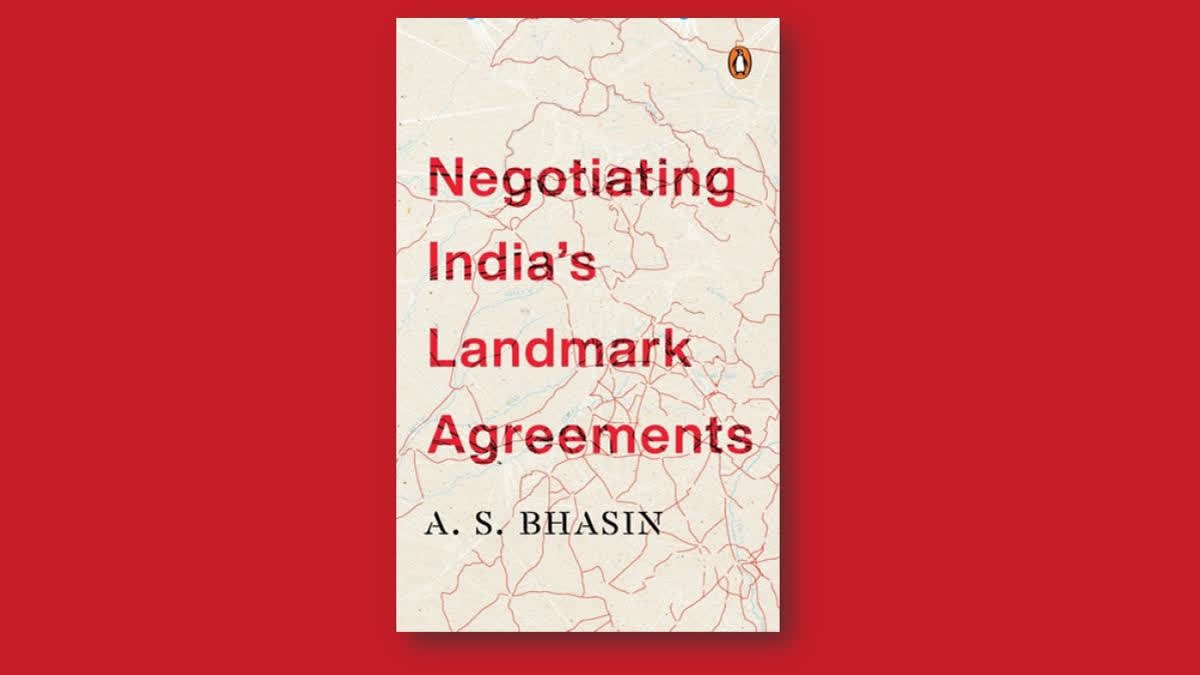New Delhi:In his recent book, Negotiating India's Landmark Agreements, Avtar Singh Bhasin, a retired Director from the Ministry of External Affairs' Historical Division, takes a closer look at some of India’s most significant treaties with other nations. He covers five key agreements: the India–China Agreement on Tibet (1954), the Indo–Soviet Treaty of Peace, Friendship, and Cooperation (1971), the Simla Agreement (1972), the India–Sri Lanka Accord (1987), and the India–United States Civil Nuclear Energy Agreement (2008).
According to Bhasin, the India-US Civil Nuclear Agreement stands out as a true game-changer for India. Not only did it give India access to advanced nuclear technology, but it also boosted India's influence on the global stage. In contrast, he argues that the other agreements, over time, haven’t quite lived up to their original promises.
ETV Bharat:India has signed a number of agreements with various countries over the years, including some key landmark deals. As time has passed, how do you think these agreements have stood up to scrutiny, and how well have they been implemented by the countries involved?
Bhasin: An agreement is signed to meet certain objectives considered important by each signatory both in the short and long term. The trigger is generally short-term while keeping in view how it would pan out in the long run. The durability of an agreement depends on how well each party feels its interests have been served by the agreement. That, in turn, depends on the due diligence done by each party in projecting the objectives they wished to achieve. Clearly, the relative strength and weakness of each party at the time of negotiating the agreement would be a major factor. The narrative in the book would show that except in the case of the India-US Civil Nuclear Energy Agreement, the objectives India set for itself were not entirely comprehensible. The results were, accordingly, not commensurate with the objectives.
ETV Bharat: If there are agreements in place, then why do some countries violate them due to differences on the other side?
Bhasin:At times, the interpretation of the language of a particular article of the agreement can lead to a misunderstanding which may look like a "violation" or deviation. To meet such unforeseen situations, remedy is always provided in the agreement. But such situations are also open to misunderstandings, particularly when the two countries are at odds with each other otherwise.
ETV Bharat: Out of all five agreements, which one do you think has truly lived up to the terms and has been most faithfully followed?
Bhasin:One cannot be categorical in such cases. An agreement is an open document for each party to benefit from it in its own way. The India-US Civil Nuclear Energy Agreement has been the most beneficial to India as it lifted all the restrictions placed on it to access nuclear technology or enter into nuclear trade with any member country of the Nuclear Suppliers Group. Whether the United States benefitted is a different matter. Its expectation was political which is conditioned by factors which are futuristic and unformulated. India-US Civil Nuclear Energy Agreement was indeed a game changer for India. It not only allowed India to access nuclear technology etc. but it also increased India’s heft internationally.
ETV Bharat: How have India's diplomatic policies evolved over time as a result of these agreements?
Bhasin:These five agreements were spread over six decades and tackled different issues unconnected with each other. Also, in each case the contours of the problem were different; the partner countries were also different. Hence, the experience of one was not applicable to the other. In each case, different strategies had to be applied depending on the objectives and the partner country concerned.
ETV Bharat: If we look at all the treaties, how would you summarise your evaluation in terms of the benefits and losses of these agreements?
Bhasin:Except for the India-U.S. agreement, none other was advantageous to India. In the India-China Agreement, 1954 China’s aim was to end India’s concessions of the yesteryears in Tibet which India enjoyed unilaterally. India’s objective was to rework the past arrangement to make for the smooth running of its institutions in Tibet; which in actual practice became more difficult after the agreement. The other objective was to build a relationship of trust which did not happen.
The Soviet Union, in offering India a security treaty in 1969 when it faced little threat, was attempting to breach India’s policy of nonalignment and trap it in a military alliance against China. The Soviet Union was then at the height of its anti-China phase which resulted in armed clashes on the borders. India had to pay a price for its refusal to fall in the Soviet trap. Even in 1971, Moscow frustrated India’s efforts to avoid the Treaty and, instead, agreed to the issuance of a statement that would keep China out of the evolving India-Pakistan conflict over Bangladesh.
The Simla Agreement too did not meet the expectations of permanent peace in the subcontinent and the narrative of the past returned with a vengeance. In the case of Sri Lanka, India chose to meddle in the domestic problem of a small neighbour without due diligence whether the demands of the Tamils were reasonable and justifiable given their miniscule number compared to the Sinhalese.
Of all the five agreements, India’s approach to the India-US Civil Nuclear Energy Agreement was well researched, well handled, well negotiated and finally well concluded.
